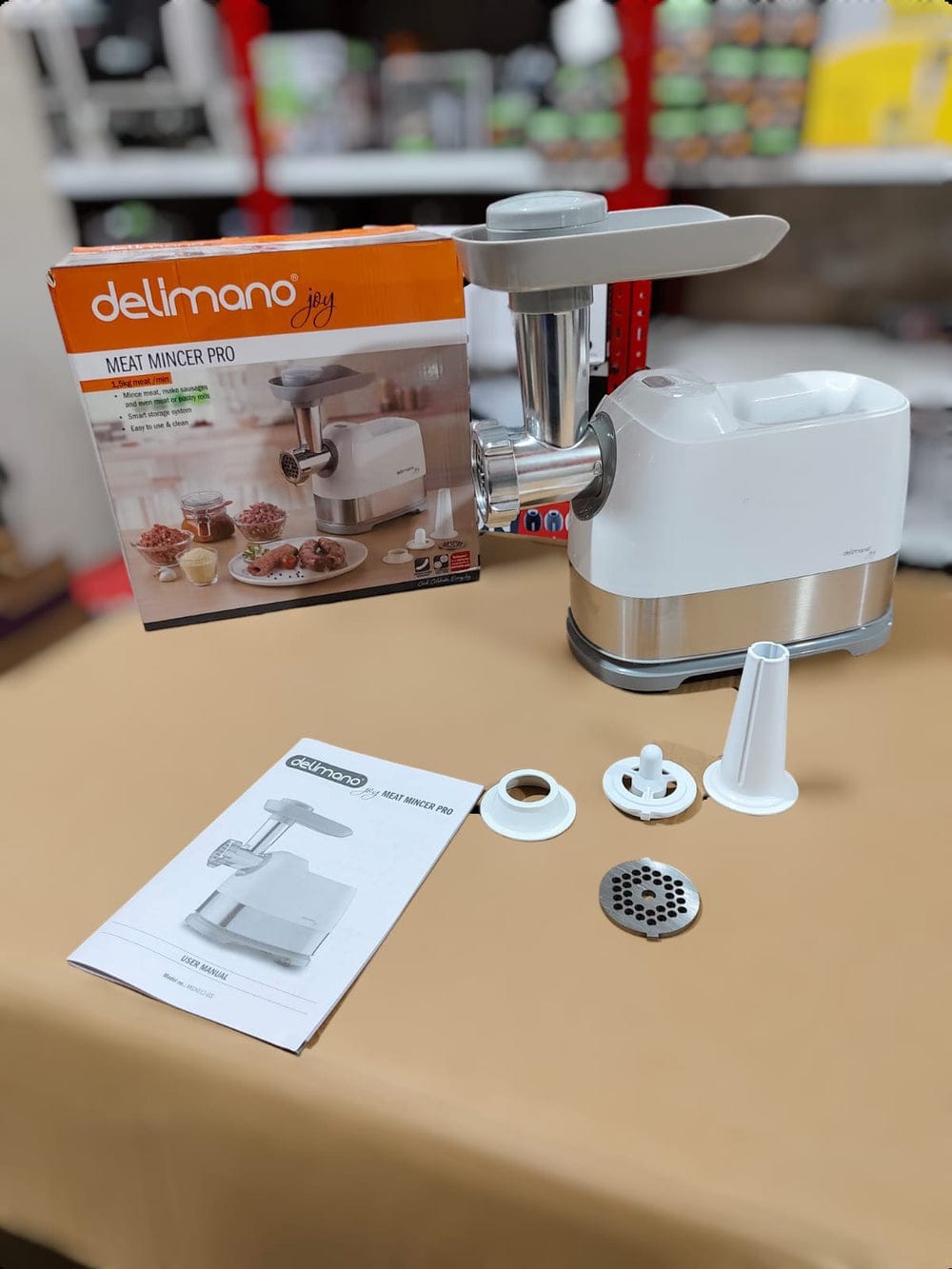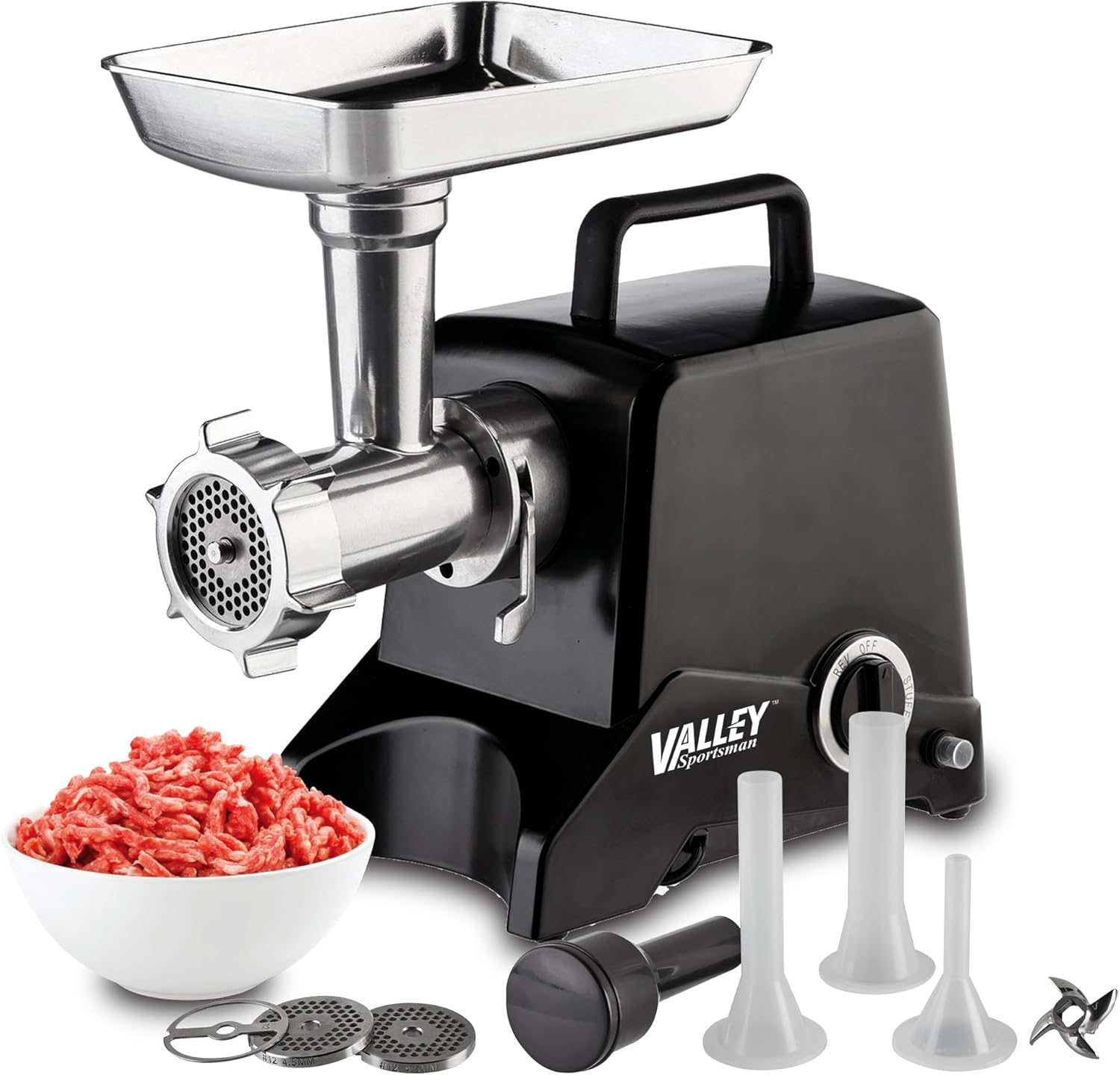Ever looked at your trusty meat grinder sitting on the counter and thought, “What else can this beast do?” It’s a powerhouse for creating the perfect burger blend or homemade sausages, but its talents don’t stop there. So, let’s tackle the big question head-on: Can You Grind Vegetables In A Meat Grinder? The short answer is a resounding yes, and doing so can unlock a whole new world of textures and flavors in your kitchen. It’s time to see your grinder as more than just a carnivore’s tool; it’s a versatile vegetable prep machine in disguise.
The Big “Why”: Benefits of Grinding Vegetables
Okay, so you can do it. But why should you? You’ve probably got a food processor or a trusty chef’s knife. What makes a meat grinder a worthy contender for chopping up your veggies? It all comes down to texture and consistency.
- Unbeatable Texture Control: Unlike a food processor that pulverizes everything with spinning blades, a meat grinder uses an auger to push food through a grinding plate. This gives you a uniform, consistent grind rather than a mushy puree. You can switch between coarse and fine plates to get the exact texture you need, from a chunky relish to a finely minced base for veggie burgers.
- Flavor Infusion: Grinding different vegetables and aromatics together—like onions, bell peppers, garlic, and fresh herbs—melds their flavors in a way that simple chopping can’t. This creates a cohesive and deeply flavorful base for soups, sauces, and stuffings.
- Time-Saving for Bulk Prep: If you’re making a huge batch of salsa, canning relish for the winter, or prepping veggies for a week of meals, a meat grinder is your best friend. It powers through pounds of produce in a fraction of the time it would take to do by hand.
- The Perfect Veggie Burger Base: This is where the grinder truly shines. It can process ingredients like mushrooms, onions, beans, and grains into a patty mixture that holds together beautifully without turning into a paste.
So, Which Vegetables are Best for Grinding?
Not all vegetables are created equal when it comes to meeting the auger. Some go through like a dream, while others can cause a bit of a jam session. I learned this the hard way the first time I tried to make a “garden-fresh” relish and ended up with a watery mess. Let’s break it down.
The A-List: Vegetables That Grind Beautifully
These veggies have the right combination of firmness and moisture content to work perfectly with your grinder.
- Onions, Garlic, and Shallots: The absolute champions. They grind up effortlessly and form the flavor base for countless dishes.
- Bell Peppers: Red, green, yellow—you name it. They add sweetness and color to ground mixes. Just be sure to remove the seeds and core first.
- Carrots and Celery: Perfect for creating a classic mirepoix base for stews and sauces. Chop them into manageable chunks first.
- Mushrooms: Excellent for adding a savory, “meaty” texture to vegetarian dishes like bolognese or burger patties.
- Zucchini and Summer Squash: When you have too many from the garden, grind them up for fritters or to sneak into meatloaf for extra moisture.
- Firm Root Vegetables: Beets, parsnips, and turnips can all be ground, but make sure they are fresh and firm. They’re fantastic for making veggie slaws or bases for vegetarian roasts.
The “Proceed with Caution” List
These vegetables can be ground, but you need to be a bit more strategic to avoid turning them into a soupy disaster.
- High-Water-Content Veggies (like Tomatoes and Cucumbers): Grinding these raw will result in a watery pulp. A food processor is often a better choice. If you must grind them, consider salting and draining them first to remove excess moisture.
- Leafy Greens (like Spinach or Kale): These can get tangled around the auger. It’s better to wilt them first or chop them very finely and mix them with other, firmer vegetables before sending them through.
- Stringy Vegetables (like Celery Ribs or Rhubarb): The long fibers can wrap around the grinder’s screw. The solution? Cut them into very small, 1-inch pieces to break up those fibers before you start.
Expert Tip from Chef David Wilson: “Always, and I mean always, chill your vegetables before grinding. Just 30 minutes in the freezer firms them up, preventing them from turning to mush. It’s the single most important step for getting a clean, uniform grind every single time.”
How to Grind Vegetables in a Meat Grinder: A Step-by-Step Guide
Ready to give it a shot? The process is simple and very similar to grinding meat. Follow these steps for perfect results.
- Preparation is Everything: Wash and peel your vegetables as needed. The most important step is to cut them into small, uniform cubes or strips that will easily fit down the grinder’s feeding tube. Think about 1-inch cubes as a good rule of thumb.
- Get Chilly: As Chef Wilson advised, cold is your friend. Place your cut-up vegetables on a baking sheet and pop them in the freezer for 15-30 minutes. Do the same with your grinder’s metal components (the auger, blade, and plate). This prevents the vegetables from warming up and releasing too much water during the grinding process.
- Assemble Your Grinder: Attach the correct grinding plate. For a chunkier texture, like for a relish or chow-chow, use a coarse plate. For a finer base, like for veggie burgers or fillings, use a fine plate.
- Start Grinding: Turn on your electric grinder or start cranking your manual one. Feed the chilled vegetable pieces into the hopper a handful at a time. Use the food pusher to gently guide them down—never use your fingers!
- Mix and Match: Don’t be afraid to grind different types of vegetables together. For a great salsa base, try grinding onions, peppers, and a bit of cilantro all at once.
- Clean Up Immediately: Don’t let vegetable juices and pulp dry onto your grinder parts. Disassemble it as soon as you’re done and wash everything thoroughly with warm, soapy water. This is especially important after grinding pungent items like onions and garlic.
Meat Grinder vs. Food Processor: Which is Better for Veggies?
This is a common question, and the answer depends entirely on what you’re trying to achieve. They are both fantastic tools, but they do very different jobs.
| Feature | Meat Grinder | Food Processor |
|---|---|---|
| Texture | Uniform, consistent grind (chunky or fine). | Can be uneven; easily turns to puree or mush. |
| Best For | Veggie burgers, relish, sausage fillings, mirepoix. | Sauces, purees, pesto, hummus, finely shredding. |
| Process | Pushes food through a plate. | Chops food with a fast-spinning S-blade. |
| Moisture | Better for managing moisture and retaining texture. | Tends to release more water from vegetables. |
Essentially, if you want a distinct, ground texture, reach for the meat grinder. If you want something smooth, creamy, or pulverized, the food processor is your go-to.
Frequently Asked Questions (FAQ)
Q1: Can I grind frozen vegetables in a meat grinder?
Yes, you can, but it’s best to let them thaw slightly first. Fully frozen vegetables can be too hard and may put excessive strain on your grinder’s motor or blade. Partially thawed is the sweet spot.
Q2: Will grinding acidic vegetables like onions damage my grinder?
No, it won’t cause immediate damage, especially if your grinder parts are made of high-quality stainless steel. However, it’s crucial to clean the parts immediately after use to prevent any potential long-term corrosion or pitting.
Q3: What’s the best grinding plate size for vegetables?
It depends on your recipe! Use a coarse plate (e.g., 3/8 inch or 10mm) for things like chunky relish or a veggie chili base. Use a fine plate (e.g., 1/8 inch or 4.5mm) for smoother textures needed for veggie burgers, pâtés, or fillings.
Q4: Can you make salsa in a meat grinder?
Absolutely! Grinding onions, bell peppers, jalapeños, and cilantro together creates a fantastic, textured base for a restaurant-style salsa. You’ll want to add your tomatoes and liquids separately to control the consistency.
Q5: How do I get the smell of garlic or onion out of my grinder?
After washing, you can try running a few slices of bread through the grinder to absorb any lingering oils and odors. Alternatively, wiping the parts down with a cloth dampened with white vinegar or lemon juice before the final rinse can also neutralize strong smells.
Your Grinder’s New Calling
So, can you grind vegetables in a meat grinder? Not only can you, but you absolutely should. By expanding its job description beyond just meat, you unlock a versatile kitchen assistant that can save you time and create textures that other appliances simply can’t replicate. It’s a game-changer for making everything from the ultimate veggie burger to large batches of garden relish.
Don’t let that powerful machine sit in the cupboard waiting for burger night. Grab some fresh vegetables, chill them down, and give it a try. We’d love to hear about your creative uses for grinding vegetables! Share your favorite recipes and experiments in the comments below.